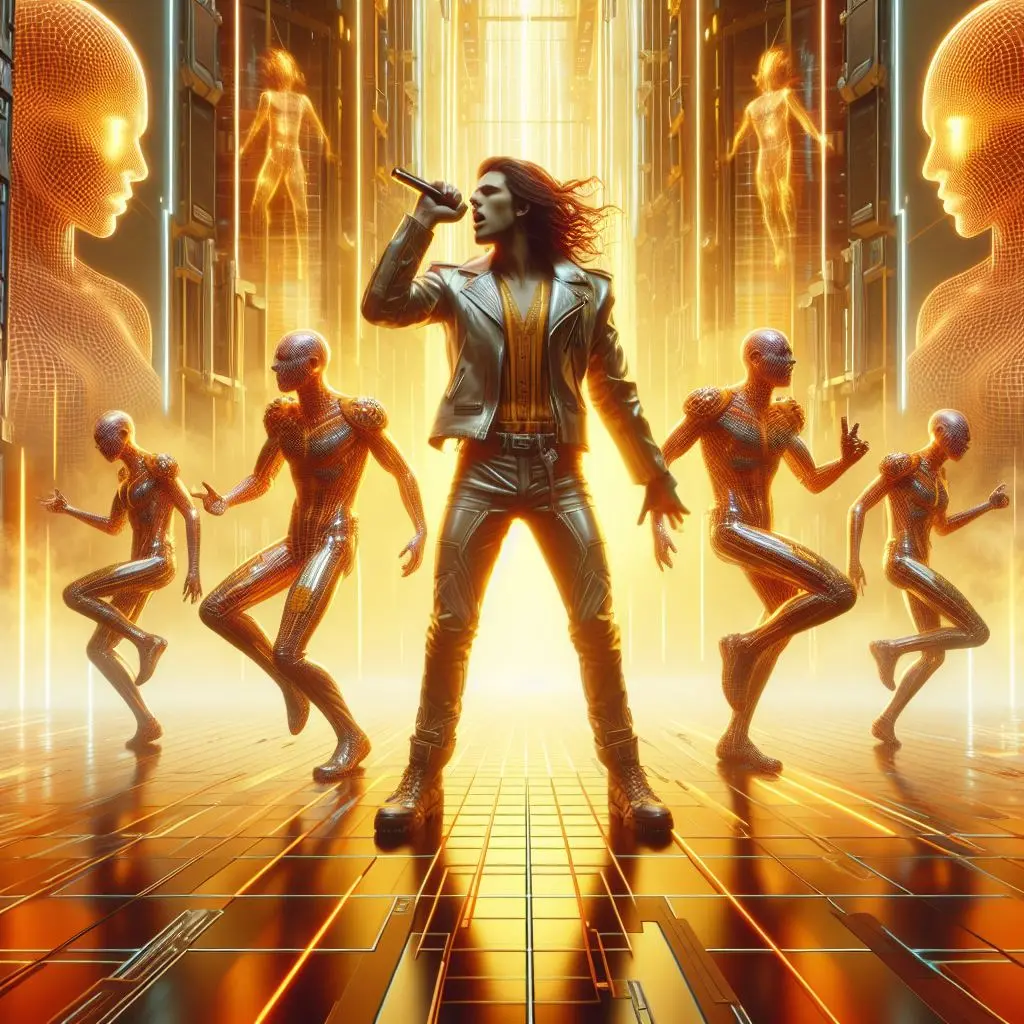Sonic Experimentation: Pushing Boundaries with Unusual Instruments and Music Techniques
Today's indie artists pushing the musical envelope with daring experimentation. Let's explore how.
At its core, music is an ever-evolving entity, constantly seeking new expressions. Sonic experimentation, the art of pushing musical boundaries, has been a driving force behind the evolution of sound. From the early days of rock 'n' roll to today's indie music scene, artists have always sought ways to break free from convention and explore the uncharted territories of sound.
Tracing the roots of sonic experimentation reveals a fascinating journey through time. Early examples of unconventional instrumentation date back to the avant-garde movements of the 20th century, when artists like John Cage challenged traditional notions of music. With the rise of indie music, the stage was set for a new wave of sonic innovation.
In this article, we take a deep dive into the complex kingdom of musical experimentation. From the use of unconventional instruments to the application of uncommon mixing methods, independent musicians have developed a wide range of innovative techniques. In addition, the freedom that indie artists have gained away from major record labels has become a breeding ground for experimental sound. So get ready to embark on this fascinating journey where innovation and uncertainty go hand in hand.
Embracing the Unconventional: Why Indie Artists are Drawn to Sonic Experimentation
In the realm of indie music, the ethos of experimentation is deeply rooted. Driven by the desire to break norms and create something truly unique, indie artists find fulfillment in sonic exploration. The indie spirit is synonymous with the freedom to deviate from mainstream expectations and delve into diverse inspirations. Unusual instruments play a pivotal role in shaping an artist's identity. By embracing unconventional tools, indie musicians stand out in a crowded musical landscape.
Beyond Guitars and Drums: Exploring Lesser-Known Instruments
While guitars and drums are staples in the music world, indie artists are increasingly turning to lesser-known instruments to carve out their sonic niche. Experimental sounds open up as artists delve into the vast array of unusual instruments available. From theremins to hang drums, the possibilities are as diverse as the artists who wield them.
Finding unique sounds in unconventional tools becomes a quest for sonic gold. The world of experimental instruments means exploring their sonic characteristics and the artists who have embraced them. Some indie music bands use unusual instruments to create unique sounds. A great example is Régine Chassagne, singer, multi-instrumentalist, and founder of the Canadian band Arcade Fire. To create a fresh sound, Régine plays the hurdy-gurdy, a stringed instrument used in the European Middle Ages. In the same vein, Johnny Greenwood, lead guitarist and keyboardist for the rock band Radiohead, uses the ondes martenot, an early electronic instrument, on several songs to create an ethereal, eerie sonic landscape.
How Bands Incorporate Unusual Instruments
While it may seem like a no-brainer, using non-standard instruments isn't just a matter of playing them and attaching the track to your recording. Bands incorporate unusual instruments into their music in a variety of ways to create different textures, timbres, and atmospheres. As such, the addition of a new, unusual musical instrument represents an intention, a purpose.
Some methods include integrating instruments related to styles outside of mainstream music, using instruments from diverse cultures, employing found objects as percussion instruments or as parts of custom-built instruments, combining unusual instruments with more standard ones, and utilizing electronic samples or manipulated sounds derived from everyday items. In that way, bands can expand their sonic palette, challenge listeners, and distinguish themselves within the broader musical landscape.
Some unconventional instruments indie bands use include the hurdy-gurdy, buke, singing saw, bagpipes, autoharp, sitar, accordion, and ondes martenot. Musicians and bands have also used unconventional instruments such as chainsaws, kazoo, melodica, and found objects like beer kegs to create unique sounds. Vocal freedom and experimentation are also unconventional techniques used to create unique sounds.

Innovative Melodies: Exploring Proven Examples of Unique Instrumentation in Indie Music
Indie bands incorporate unusual instruments into their music in various ways. As mentioned earlier they are included to create distinct textures, timbres, and atmospheres. However, it’s important to analyze the methods employed by musicians.
Some methods include integrating instruments traditionally associated with specific genres outside of mainstream rock. The hurdy-gurdy is a proven example as well as the inclusion of the flute in Jethro Tull's music. Using instruments from diverse cultures is also a good way to experiment and even catch attention from the audience.
Within the rarest examples, we can find custom-built instruments or also bands such as Tilly and The Wall that have a tap dancer who works as a percussionist. Last but not least, musicians utilize electronic samples or sounds recorded from common items (claps, wind, sound of cutlery, etc.). By integrating unusual instruments, bands can expand their sonic palette, challenge listeners, and distinguish themselves within the broader musical landscape.
Breaking Traditions: Unorthodox Approaches to Composition
Composition is at the heart of music creation, and indie artists are rewriting the rulebook. As we discover new ways of making music, we'll look at how artists are breaking away from old-fashioned song patterns and formats to create something entirely new and innovative. The focus will be on pushing boundaries and embracing a fearless attitude of experimentation.
Gone are the days of verse-chorus-verse conformity. In the realm of unorthodox composition, artists dismantle traditional song structures like architects demolishing old buildings, clearing the way for something bold and unprecedented to emerge. Through asymmetrical arrangements, nonlinear progressions, and unexpected transitions, they challenge listeners to embrace the unfamiliar and embark on a journey of sonic exploration.
In the pursuit of innovation, dissonance becomes a playground rather than a roadblock. Unorthodox composers revel in the clash of opposing forces, weaving discordant melodies and jarring harmonies into the fabric of their music like threads in a tapestry. Through controlled chaos and calculated cacophony, they challenge the notion of what it means to create beauty in sound, daring listeners to embrace the raw, the imperfect, and the unexpected.
Just as a painter uses a blank canvas to tell a story, so too do indie artists use unconventional formats to craft musical narratives that defy expectations. From sprawling epics that unfold over multiple movements to fragmented vignettes that offer mere glimpses into a larger whole, they push the boundaries of what it means to convey emotion and meaning through sound. By embracing the avant-garde and rejecting the status quo, they invite listeners to join them on a journey into the unknown, where every twist and turn holds the promise of discovery.
The Magic of Sound Manipulation: Unconventional Studio Techniques
In the heart of the recording studio, where the air hums with creative energy, artists embark on a journey of sonic exploration unlike any other. Here, the canvas is not just sound, but the very fabric of reality itself, waiting to be molded, shaped, and transformed into something entirely new.
Reverse Engineering: Unraveling the Fabric of Sound
One of the most powerful tools in the arsenal of studio wizardry is the art of reverse engineering. Rather than simply creating sounds from scratch, artists deconstruct existing audio, dissecting it layer by layer to reveal hidden depths and undiscovered potential. By flipping, reversing, and manipulating audio in unimaginable ways, they breathe new life into familiar sounds, creating creations that defy convention and challenge the boundaries of perception.
Embracing Ambient Textures: Painting with Sound
In the studio, silence is not empty but pregnant with possibility. Ambient textures, the subtle nuances of the sonic landscape, serve as the painter's palette, waiting to be infused with color and emotion. Through careful layering, blending, and experimentation, artists craft rich tapestries of sound, weaving together disparate elements to create immersive sonic environments that transport listeners to realms beyond imagination.
Embracing Unconventional Effects: Sculpting Soundscapes
But the true magic of the studio lies not only in what you hear but how you hear it. Unconventional effects, from otherworldly reverbs to mind-bending modulations, serve as a sculptor's chisel, carving new sonic landscapes with each twist and turn. Through experimentation and innovation, artists push the boundaries of sonic possibility, transforming sound into art and ushering in a new era of musical exploration.
Pushing the Limits: Experimental Performance Techniques
Live performances offer a unique opportunity for sonic exploration. Artists can engage audiences through interactive performances, using looping, layering, and technology to build complex soundscapes on stage. By bringing their experimental vision to life in a live setting, musicians can foster a deeper connection with their audience.
Incorporating visuals, dancers, or innovative elements into your performance can enhance your onstage presence. Some musical groups create conceptual shows that weave a narrative seamlessly with the music throughout the performance. In addition, interactive presentations that include fan participation can be both engaging and captivating to the audience. Remember, the choice is yours, so create a unique performance that allows you to maintain your authenticity.

Sonic Oddities: Unusual Recording Techniques
Creating a recording space that embraces the ethos of experimentation is crucial for indie artists. Setting up unconventional studios offers tips for creating unique recording spaces and exploring the possibilities of portable recording. With the right setup, artists can translate their sonic visions into recordings that retain authenticity and rawness.
Recording unusual sounds can involve various artistic expressions as well as capturing phenomena that require documentation. Some examples include albums such as "Unusual Sounds" by Various Artists, featuring compositions such as those by Keith Mansfield, D. Patucchi, and Klaus Weiss.
In addition, YouTube channels share collections of strange sounds captured on tape, often sparking curiosity and debate about their origins. Forums and online communities offer insight into unique sounds encountered during recording sessions. Users can discuss odd noises, reversed tracks, phrases hidden in tracks, or whatever peculiarities are present in your music.
Beyond the Norm: Mixing Strategies for Experimental Music
Mixing experimental music involves exploring unconventional techniques and breaking conventions to create unique sounds and textures. Some areas to experiment with include sound design, exploration of mixing techniques, arrangement reorganization, unusual routing, and unusual use of effects.
Unlikely mixing techniques such as preserving glitches, breath, and artifacts in the mix can also add character to the music. It is important to have a firm intention before starting the experiment and to learn to let go of any expectations. Setting a deadline can also help to keep material in its raw form and go beyond what was initially thought of as a good result.
Final Thoughts
As we conclude this exploration of sonic experimentation, it's clear that the journey is never-ending. The ever-expanding universe of sonic possibilities awaits those willing to embrace the unknown. It's pertinent to reflect on the importance of inspiring the next wave of sonic pioneers, encouraging artists to continue pushing boundaries, and nurturing a community that celebrates the beauty of out-of-the-box music. The sonic odyssey is a perpetual adventure, and indie artists are at the forefront of this exciting journey.
Blog Article Tags
embracing unconventional indie drawn sonic exploration fulfillment diverseMore Articles
Where To Find Good Indie Music - If you're a long time fan or first time listener of Indie music, we'll show you the best methods for discovering the music you love.
The Effects of Piracy on Artists? - Exploring music piracy: ways, consequences, impact on industry & artists.
The Origins Of The Term "Hip Hop" - We discuss the cultural and artistic elements that make up Hip Hop's origin.
Who Is the King of Indie Music? - Who made the biggest impact as an indie artist? Let's review the kings & queens of indie music.
Are Indie Artists Truly Independent? - Your favorite indie artist blows up out of nowhere & it makes you wonder who's behind them.


